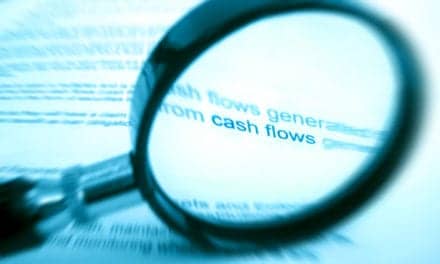The US Food and Drug Administration (FDA) announced that it is allowing the marketing of a new hearing aid that uses a laser diode and direct vibration of the eardrum to amplify sound: the EarLens Contact Hearing Device (CHD), which is manufactured by EarLens Corporation of Menlo Park, Calif.
The FDA reports that the combination of laser light pulses and a custom-fit device component that comes in direct contact with the eardrum is designed to use the patient’s own eardrum as a speaker and enables amplification over a wider range of frequencies for some hearing impaired persons. The EarLens CHD is indicated for use by adults with mild to severe sensorineural hearing impairment.
According to statistics compiled by the National Institute on Deafness and Other Communication Disorders, 37.5 million adults aged 18 and older in the US report some form of hearing loss. However, only 30% of adults aged 70 and older and 16% of adults aged 20 to 69 who could benefit from wearing hearing aids have ever used them.
“For the millions of Americans with hearing impairment, hearing aids can significantly improve regular daily communications, as well as overall quality of life,” said William Maisel, MD, MPH, deputy director for science and chief scientist in the FDA’s Center for Devices and Radiological Health. “People with hearing impairment now have a new option that may help improve their hearing by amplifying sounds over a broad spectrum of frequencies.”
The EarLens CHD consists of two parts: a tympanic membrane transducer (TMT), which is non-surgically placed deeply into the ear canal on the eardrum, and a behind-the-ear (BTE) audio processor that sits on the outer ear and is connected to an ear tip that is placed in the ear canal. External sound waves received by the BTE processor are converted to electronic signals, digitally processed, amplified and sent to the ear tip, which contains a laser diode. There, the electronic signals of amplified sound are converted to pulses of light. The laser light pulses then shines onto a photodetector in the TMT, which converts the light back into electronic signals, transmitting sound vibrations directly to the eardrum by direct contact.
The EarLens CHD differs from traditional air conduction hearing aids in several ways. The TMT component is custom-molded to the patient’s eardrum and contains a driver mechanism that directly stimulates the eardrum, enabling efficient amplification of sound (functional gain).
Clinical data supporting the safety and effectiveness of the EarLens CHD included several assessments over a 4-month period, such as residual hearing stability, improved word recognition, functional amplification gain, and the ability to hear sentences in background noise compared to listening without any amplification. Studies showed that after 30 days of device use, the 48 subjects experienced, on average, a 33% improvement in word recognition. Users also experienced a clinically significant functional gain of 30.5 dB on average in the high frequency range (2,000-10,000 Hz), with an average of 30-40 dB of functional gain noted at 6,000 Hz and above and a maximum of 68 dB at 9,000-10,000 Hz, which is not typically achieved with conventional air-conduction hearing aids.
According to the FDA, several subjects experienced abrasions in the ear canal, primarily related to ear tip use or the impression-making procedure. There were no serious device-related adverse events. The FDA reviewed the data for the EarLens CHD through the de novo premarket review pathway, a regulatory pathway for some low-to-moderate risk medical devices that are not substantially equivalent to an already legally-marketed device.
A new type of hearing aid. EarLens was started by Rodney Perkins, MD, the serial entrepreneur and ENT surgeon who, in the hearing industry, was behind the launches of ReSound Corp, Sound ID Bluetooth Personal Sound System (PSS), and more recently the SoundHawk personal sound amplification product (PSAP). The Hearing Review first reported about EarLens when the concept for the new hearing aid was outlined at the February 2012 Association for Research in Otolaryngology (ARO) Meeting by EarLens Chief Scientist Sunil Puria, PhD. The technology has been considered extremely promising, and it created particular attention in the hearing care field when Brent Edwards, PhD, a prominent research scientist and VP of research at Starkey Hearing Technologies, left Starkey to join EarLens in August 2014.
EarLens doesn’t fit cleanly into what most dispensing professionals consider a “hearing aid”; it does not amplify sound by air conduction, but instead mechanically stimulates the eardrum using light as the transmission medium. The device has the potential to substantially reduce or eliminate feedback (ie, there is no traditional “sound loop” feedback mechanism as found in hearing aids), and as noted above, may also be able to provide a wide range of gain in addition to the an ultra-wide frequency range.
Source: FDA and The Hearing Review





Will this hearing help people with a lost of high frequency sounds?
My wife and I are both 70, with hearing problems. Very interested and is it affordable?
I am very interested in these hearing aids. What is the cost?
Currently, I’m in the medical field and do research on the new “cutting edge” technologies that improve the lives of consumers that have challenges with both their vision and hearing. For instance, I use a custom-made, soft contact lens, manufactured by Coopervision, called The Proclear, Multi-Focal, Toric Lens, that has enabled myself and others with high myopia and some farsightedness, to see 20/20 at both distance and reading. That’s right…no more reading glasses or need for invasive LASIK for me! My mother, a former Miss America finalist and professional Broadway Star (Georgia Reed, 1951), who worked opposite Shirley MacLaine and other great talents in Musical-Comedy productions of the 1950s. Within the last 15 years, her hearing has diminished to the point that it is nearly impossible for her to attend parties, social functions or listen to TV, even with her existing hearing aids AND headphones. She misses words, complete sentences or is unable to distinguish between background and other ambient noise, making it almost impossible to hear certain frequencies, even with the “Top-of-the Line” Phonak BTE hearing aids. I’d like to receive further information on Earlens (or any other FDA approved breakthroughs for the hearing impaired). Please feel free to have one of your designates contact me at: (925) 210-1965.
Your assistance in this matter is greatly appreciated, and I look forward to hearing from you.
Yours sincerely,
John Reed Baker
Dear Mr. Baker,
Thank you for your interest in the technology we report on at The Hearing Review, and for sharing your information! We are providing you with contact information for EarLens, so that you can contact the company directly for more information on its EarLens laser-based hearing aid. EarLens Corporation is headquartered in Menlo Park, Calif. You can email them at: [email protected] or [email protected]. The company’s main phone number is: (650) 366-9000. Here is a link to more information about their management team: http://www.earlenscorp.com/company/management/
We at HR wish you and your mother the best of luck in finding the right hearing therapy for her hearing loss.
Hi…i am very interested to use this new laser hearing aid. Thanks. Riazi.
Very interested. I’m really bothered by any kind of background noise, and TV is not very enjoyable.
This would an excellent breakthrough for us who have hearing impairment but the big question is…is it affordable
Would love to hear more about this device.